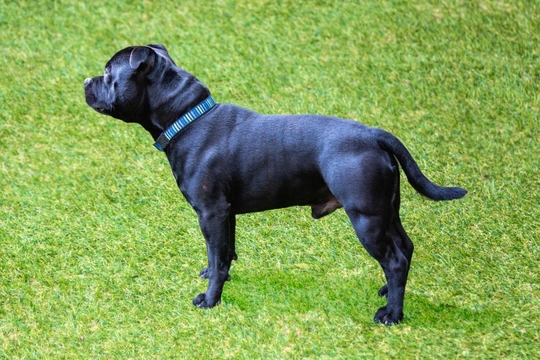
Coat changes and problems that can indicate ill health
Different dog breeds can have vastly different coats in terms of everything from the colour, texture, length, thickness, layers and natural condition, and so there is no one size fits all template for what makes a good coat or a poor quality one.
However, there are various conditions and problems that can in their turn lead to issues with the coat itself and not only cause problems in terms of the coat’s appearance, but that may indicate something amiss with your dog in general, or at least, show you that something is wrong with your dog’s coat and skin that should be corrected.
Being able to judge what makes for a healthy coat and so, being able to identify issues is something that takes a combination of knowing your own dog’s coat well, and knowing what it should look and feel like according to your dog’s breed standard and general traits. Regardless of whether your dog’s coat is long or short, rough or smooth, thick or fine, there are a range of different changes that can occur to your dog’s coat that can indicate ill health, allergies and other problems that you will need to look into.
In this article, we will look at some of the most common skin and coat problems and changes that can indicate ill health in the dog. Read on to learn more.
Dull fur
Not all dog breeds have a very shiny, glossy looking coat, and dogs that have a broken or rough textured coat will of course look rather different than a breed with flowing locks like the Afghan hound! However, even dog breeds with rough or harsh coats should have fur that looks and feels healthy-it may not be smooth to the touch, but it should feel and look bright and in good condition, not tacky or unkempt even when the dog is clean.
Even a dog that is feeling a little under the weather might have duller fur than normal, so keep an eye out for changes in the coat of this type as a general indicator of your dog’s health and condition.
Breakage and brittle fur
Again, different breeds of dog have different lengths of fur, and if your dog’s coat is very short and does not grow any longer you are unlikely to notice breakage of the individual hairs.
However, for dogs with medium or long fur, each individual hair strand should appear to be smooth and healthy, without split ends or brittleness, and the fur should not be breaking off or prone to snapping. Problems of this type can indicate poor nutrition or certain hormonal and immune-mediated disorders.
Heavy shedding
All dogs shed, although how much any given dog sheds can be variable-some breeds continually lose hair all year round while others will go through a distinct shedding period once or twice a year at the changing of the seasons. If your dog is shedding much more than normal, appears to be shedding continually when they did not previously do so or otherwise appears to be losing more fur than they should be, something may be wrong-so get to know your dog’s normal shedding patterns, and watch for any anomalies or problems.
Patchy hair loss
Even if you don’t notice that your dog is shedding particularly heavily, noticing thin or balding areas on your dog’s coat can be an indicator of a wide range of potential problems, from localised allergies to parasitic infestations to systemic health conditions and many other things too.
Talk to your vet if you notice that your dog seems to be losing patches of fur, or if you can identify changes in the colour or texture of their skin in certain areas of their bodies.
Dandruff
Dandruff can affect dogs just as it can people, and dandruff occurs when the dog sheds surface skin cells at a heavier rate than normal, causing congestion of the skin and white flakes to appear on and around your dog’s coat. There are a range of different causes for dandruff in dogs, some of which can be corrected and others that will need to be managed by means of skin treatments and shampoos.
Sebum build-up
Sebum is a waxy substance produced from the pores to protect and lubricate the skin and help to keep it clean. However, if your dog’s body produces too much sebum, it can clog the pores and lead to skin and coat problems, as well as a tacky, visible build-up on the skin and coat, which is naturally clear or white but that can appear darker as it collects dirt.
Excessive sebum production can be hormonal, or a side effect of various health conditions and illnesses, so speak to your vet for advice.
A strange smell
Finally, most of us are familiar with the way that dogs can smell when they’ve gone too long without a bath, or if they have got wet or mucky and not been cleaned up properly. That said, dogs should not smell foul for any other reason, and being a bit whiffy is not normal. If your dog smells bad or odd even when you know they are clean, there might be a problem that you are not aware of, so ask your vet to check your dog out, just to be on the safe side.



